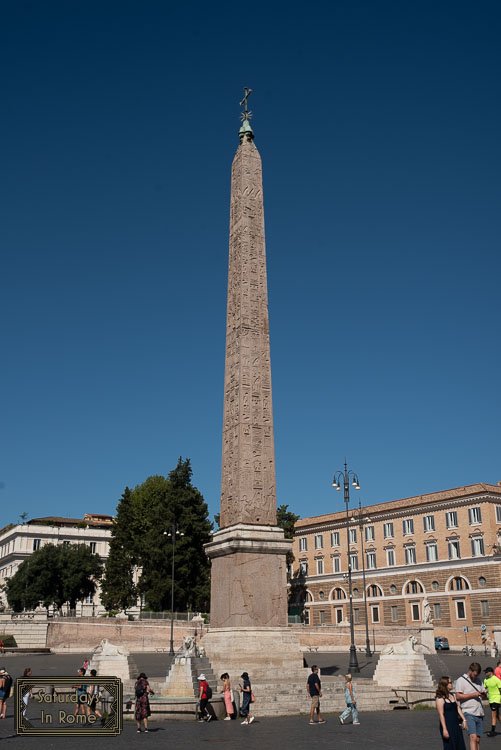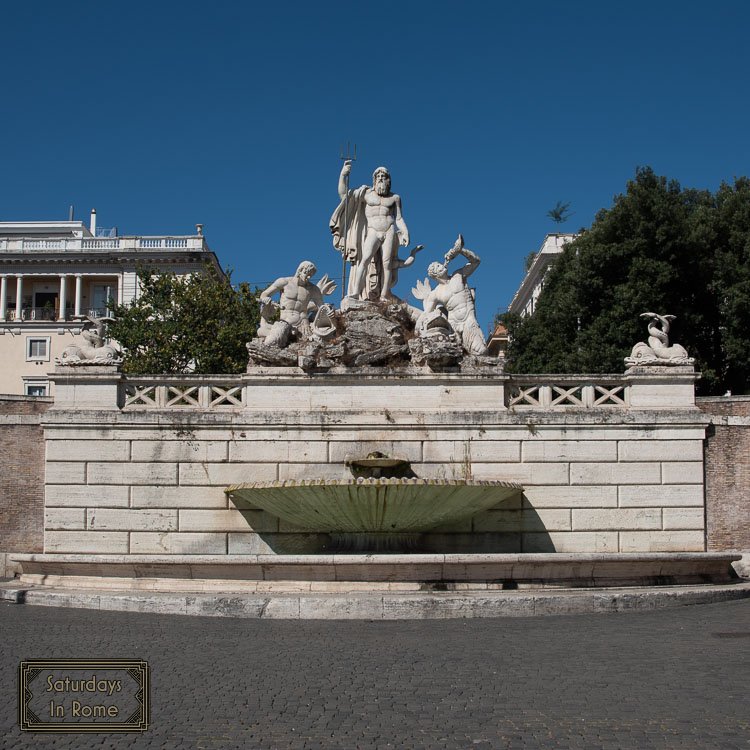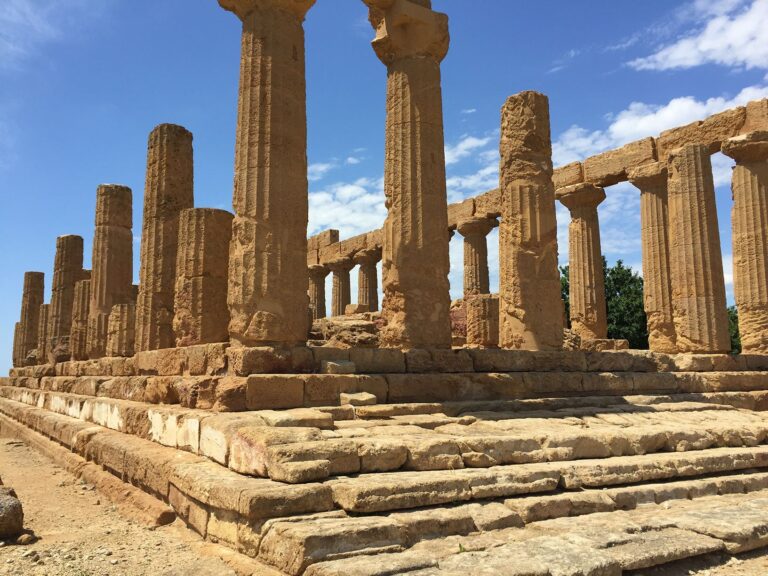Piazza del Popolo Rome – The Beauty And The History
Piazza del Popolo Rome is one of the top spots when you are walking in the city during your next Italian vacation because there is beauty behind every corner.
The Trident
Piazza del Popolo (Rome), which translates to The People’s Plaza, is an imposing open space at the junction of the three main streets of the historic center of Rome: via del Babuino, via del Corso and via di Ripetta. This lively area of the city is a “Must See” area because of the high-end and luxury fashion stores along via Del corso, via dei Condotti and the other side streets between the Spanish Steps in Piazza di Spagna, Rome, and Piazza del Popolo.
The piazza is within the Aurelian Walls and is at the northern gate. The gate was called Porta Flaminia during the time of ancient Rome, but today is known as Porta del Popolo.
Need Help Planning?
- Cheap Flights: Find The Most Affordable Flights.
- Accommodations: From 1 to 5 Stars And More.
- Car Rentals: Affordable Travel Across Italy.
- Sightseeing Tours: Explore Some Amazing Tours.
- Buying An eSIM: Stay Connected In Italy.
This post includes affiliate links.
When Was Piazza Del Popolo Rome Built?
The development of the area around Piazza del Popolo in Rome began in the 16th century and continued over the subsequent centuries. The first fountain, la Fontana del Trullo, was built in the piazza, but after being viewed as too small for such a grand space, it was later moved to Piazza Nicosia.
During the 1600s, the iconic twin churches, Santa Maria in Montesanto and Santa Maria dei Miracoli, were planned to be built symmetrically, but due to space issues, they have different floor plans and different domes. Despite the differences, from the square and thanks to an optical effect, the churches look identical.
Twin Churches
What Is There To See In Piazza Del Popolo – Rome?
Taking a walk in Rome around Piazza del Popolo gives you the opportunity to enjoy some amazing things to see. The centerpiece of the piazza is an Egyptian obelisk surrounded by four fountains. There are other fountains around the outside of the piazza, along with the twin churches that help define The Trident and four sculptures that define both entrances/exits to the piazza.
On the eastern side of the piazza, is the Fontana della Dea Roma (fountain of the Goddess Roma), adorned with a large sculptural group. A statue of the armed goddess is flanked by two statues depicting the rivers Tiber and Aniene, and the she-wolf nursing the twins at its foot. Behind is the terrace of Pincio, a wonderful urban walk from which you can see a sweeping view of the piazza and enjoy spectacular sunsets.
On the opposite (western) side of the piazza is a sculptural group adorning the Fontana del Nettuno (fountain of Neptune). It is a statue of Neptune with the trident in his right hand, at whose feet are placed two tritons with dolphins. The sculpture is above a large travertine semicircular basin above which a shell valve collects the water poured from a small basin at the top.
Fountain of the Goddess of Rome
What Is In The Center Of Piazza Del Popolo?
In the center of the piazza is the Fontana dei Leoni (Fountain of the Lions) which has round travertine basins and is dominated by the Egyptian-style white marble lions that surround a real Egyptian obelisk. The Flaminio Obelisk (Obelisco Flaminio) is another Egyptian obelisk that was resurrected by Pope Sixtus V which, like the Lateran Obelisk, was dug up in Circus Maximus during an excavation and relocated to a more prominent location. It is 79 feet high and was raised in the Piazza del Popolo, which at the time was the northern entrance to Rome. More is known about this obelisk to its hieroglyphics, which extol the virtues of the Pharaohs Ramses II and his son Merneptah from the 13th century BC.
What Is An Egyptian Obelisk?
An ancient Egyptian obelisk is a four-sided, tapered stone monument that is typically topped with a pyramid. These were built in Africa, with the largest number having been built in Egypt, but Ethiopia gets into the obelisk business as well. They are typically adorned with hieroglyphics that would tell some story of triumph over one’s enemies, or to celebrate whichever Pharaohs are currently in power.
Flaminio Obelisk
Why Is Piazza Del Popolo Rome Called This?
In modern Italian, the name Piazza del Popolo literally translates to The People’s Plaza, but this isn’t actually the origins of the name. Popolo is derived from the poplars, which are trees, like the cottonwood and the aspens. This is also where the name of the church, Santa Maria del Popolo, comes from.
In Which Rome District Is Piazza Del Popolo Located?
The Piazza del Popolo is located in the Campo Marzio district (rione), along with the Spanish Steps and Piazza Nicosia. It is bordered on the west by the Tiber River and on the east by the Villa Borghese.
This area, which includes via del Corso, via dei Condotti and via Margutta has fantastic views, shopping and art galleries that should not be missed. This area is packed with historical sites and beautiful churches to see. The piazza is a great resting place for the weary traveler and there are a couple of fantastic places to get a coffee if you need a little boost. I’d recommend: Rosati and Canova.
Why Are Two Identical Churches In Piazza Del Popolo?
During the 17th century, the iconic twin churches, Santa Maria in Montesanto and Santa Maria dei Miracoli, were planned to be built symmetrically, but due to space issues, they have different floor plans and different domes. Despite the differences, from the square and thanks to an optical effect, the churches look identical.
The origin of the two churches traces back to the restoration of the main entrance of the Aurelian Walls during the Middle Ages and Renaissance Rome. The Pope commissioned the monumental design of the entrance of Via del Corso, which included two churches with central plans, but the different shapes of the two areas available forced deep modifications to the projects.
The Fountain of Neptune
More Places To Visit When Walking In Rome
There is an almost limitless number of things to see in Rome and taking a guided (or self-guided) tour will give you a chance to see all the amazing sights of the Eternal City. If you enjoyed this article of Piazza del Popolo Rome, here are some links to some of the hidden sites of Rome that you should check out:
- Finding Caravaggio’s Famous Paintings In Piazza Del Popolo.
- Santa Maria del Popolo Caravaggio Paintings Inspire All.
- The Ugly Boat and The Spanish Steps In Piazza di Spagna, Rome.
- The Spanish Steps Flowers Are A Sure Sign Of Spring In Rome.
- The First Part Of The Mysterious Egyptian Obelisks In Rome.
- The Second Part Of The Egyptian Obelisks In Rome.
- Ancient Roman Fountains That You May Have Overlooked.
- The Famous Fountains In Rome, Italy Shouldn’t Be Missed.
- These Famous Fountains In Rome Are Definitely My Favorites.
- The Villa Borghese Gardens Is A Great Spot To Run And Relax.
- The Borghese Gallery And Museum Shouldn’t Be Missed-
- The Altar Of The Fatherland In Rome Can’t Be Missed.











